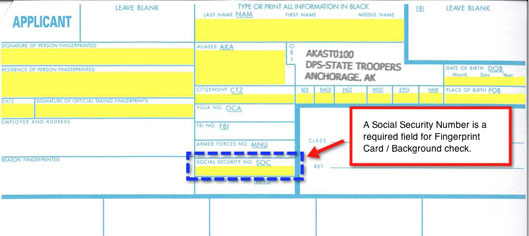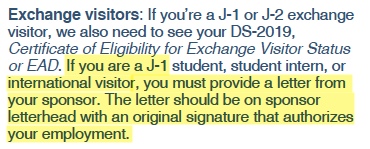
- Permission to work as a teacher in Alaska - Getting certified to teach in Alaska - Handled by the State of Alaska's Teacher Certification Office in Juneau.
- Getting a Visa to enter in the USA for work purposes - Handled by the US Department of State. The State website has very specific requirements for visas. We have information below about these, but no direct experience. There are agencies and businesses which exist to recruit, screen and place teachers in US schools from overseas using different visa types.
- Finding a job in Alaska - Teacher applicants from anywhere can use the free ATP website to find open jobs and apply with school districts. Only a relatively small number of districts currently hire teachers from other countries, but the numbers seem to be increasing in recent years.
In the United States, each state - our political units which are like provinces - set teacher certification / licensure rules. You will need to be certified in Alaska in order to work here. All states have their own, slightly different certification criteria, and a process through their own Department of Education, so this is not just in Alaska.
No matter what else you read here, or on the ATP forum or Reddit or an agency's website, your specific questions relating to getting your license to teach in Alaska should be directed to the very helpful staff at the Teacher Certification Office at the Alaska Department of Education in Juneau. The Teacher Certification Office is the official source of all certification information, and they have a small staff who will decide your status.
Alaska Department of Education - Teacher Certification Office - Juneau
https://education.alaska.gov/teachercertificationInitial Teacher Certification Types - Teachers new to Alaska, even if experienced in other places, have to get an Initial Certificate when they move to Alaska.
https://education.alaska.gov/teachercertification/certification/initialCost of Alaska Teaching Certification - From the Alaska Teacher Certification Office website:
Alaska Department of Education - FAQ Page for Foreign Teachers
https://education.alaska.gov/FAQ/
Alaska Department of Education - All FAQs
https://education.alaska.gov/FAQ/TeacherCertification/All#q30
Remember the certification information on the our website here at ATP is not the official information, but is just intended to get you started. Here is our general information on this topic, which may change year-to-year:
It is important to note that your Alaska Teacher Certification application has to be sent in a single packet or envelope. That means the completed application forms, all of your supporting documents, and your fingerprint card (see below) have to be in the same envelope with payment for the fee. The documents must also be notarized prior to sending, and Alaska EED provides this information about that ( Word document).
One of the challenges that sometimes causes problems for overseas teachers who do get their Initial certification is completing the required Basic Competency Testing in Alaska after they are hired. This is needed for extending their Initial, short-term teaching certificates after they arrive and start working. The struggle with testing is partially because it can be difficult in rural / remote areas to arrange and take a test. It is also a challenge for some because the testing format is in not just in English, but American-style English, and so expects the overseas teacher to know certain terms, vocabulary and general knowledge items he or she may not have been exposed to in studying it as a second language.
Also, as part of the process of certification, the Alaska Teacher Certification Office - and every other state - will require foreign teachers to have their college transcripts verified and evaluated. The Alaska Department of Education information for credential review, including a list of agencies who can do the evaluation for a fee, can be found here:
Alaska Department of Education - Teacher Certification - Foreign Teacher Information
https://education.alaska.gov/teachercertification/outside-programs
All teachers who apply for certification in Alaska must undergo a background check, including getting fingerprinted on a very specific Federal Bureau of Investigation (FBI) form called the FD-528.
Alaska Teacher Certification Background Check Info
https://education.alaska.gov/teachercertification/fingerprintsFBI Fingerprint Form (FD-528)
https://www.fbi.gov/file-repository/standard-fingerprint-form-fd-258-1.pdf/view
FD-528 Form (PDF download link)
However, in order to actually get your Alaska Teaching Certification approved to teach in Alaska, you will need a US Social Security Number. This is a very complicated process, but is doable if you are a J-1 Visa applicant. See the "Visa Information" section of this page for details about this type of visa.

If you are overseas, but not applying for a J-1 Visa, it will be difficult - perhaps even impossible? - for you to apply for a Social Security Number before arrival. This is a bit of a "Catch 22" in that the background check needs to be completed before you can teach students, but the process takes several weeks or more. If you can't apply for before you arrive, you may not be able to be paid as a teacher by your employer until you get the fingerprint cards and certificate squared away.
The rule used to be that if you were outside the United States, and therefore unable to apply for a Social Security Number, overseas teachers could only be temporarily certified until they arrive and can apply. It is not clear from the Alaska Department of Education website if this is still the case, but the Alaska Teacher Certification Office does provide this link for information about getting a Social Security number:
Social Security Administrationhttp://www.ssa.gov/ssnumber/
Social Security Number / Cards for Noncitizens
https://www.ssa.gov/pubs/EN-05-10096.pdf
This form has lots of information, but at the bottom of the first page,
this part clarifies that J-1 Visa teachers can apply for Social Security numbers.

Federal Benefits Units - Overseas Federal Benefits Unit (FBU) offices provide services for the USA's Social Security Administration, Department of Veterans Affairs, Office of Personnel Management, Railroad Retirement Board, Medicare, and Department of Labor. This page is from the official Social Security website and lists the FBUs by country around the world:
https://www.ssa.gov/foreign/foreign.htm
FBU Example (Philppines)
https://ph.usembassy.gov/u-s-citizen-services/social-security/
Social Security Info for Overseas Residents - This overview is from another organization, not the actual Social Security offices, but it might be helpful to some (verify with official sources):
https://www.americansabroad.org/guidance-for-obtaining-your-social-security-number-from-overseas/
There are two main types of visas used by school districts in the United States to hire teacher for shortage areas: H-1B & J-1 visas. Either can work, but in Alaska, their use is still fairly limited.
J-1 Visas - Exchange Visitor Program
The most commonly used process currently for foreign teachers in Alaska is now the J-1 Visa Program, which is one of the Exchange Visitor Programs managed by the US Department of State. Teachers hired under the J-1 program can work in the US for three years, and then extend for another two years if they can get an exemption or "No Objection" letter from their home country. After their first 3 years, teachers are eligible to repeat the program provided that they live outside the United States for two years, and still continue to meet the eligibility requirements.
The three parts to the puzzle are:
- Participants: Teachers who meet the requirements (see below), including having an equivalent college degree, and at least two years of teaching experience in their home country, and the ability to get teacher certification (see above).
- Sponsors: The agencies that screen teacher candidates in their countries, and are technically responsible for overseeing the teacher's "exchange experience". They have to meet requirements set by the US Department of State.
- Hosts / Employers: In Alaska, these would be the school districts that the teacher is hired by / placed with by the Sponsor.
There are probably less than ten school districts using we know of currently using J-1 visa teachers in Alaska, but we don't currently have a list, as it varies each year depending on district needs and the HR staff's interests. J-1 visas do seem much better for districts, as candidates have actually been able to navigate the visa and certification processes, and arrive in time for August start dates after being hired in the spring. There are some challenges reported, of course, including the ability for some applicants to pass the required Basic Competency Exam requirements.
US Department of State - J-1 Visa Program
https://j1visa.state.gov/programs/teacher
Here are the basic requirements of the J-1 visa program. Applicants must:
- Meet the qualifications for teaching in primary or secondary schools in their country of nationality or last legal residence;
- Be working as a teacher in the home country or country of legal residence at the time of application, or, if not working as a teacher, otherwise meet the eligibility qualifications and: (a) have recently (within 12 months of application) completed an advanced degree and (b) have two years of full-time teaching experience within the past eight years;
- Have a degree-equivalent to a U.S. bachelor’s degree in either education or the academic subject field in which they intend to teach;
- Have a minimum of two years (24 months) of teaching or related professional experience;
- Satisfy the standards of the U.S. state in which they will teach;
- Be of good reputation and character;
- Be seeking to enter the United States for the purpose of full-time teaching as a teacher of record at a primary (including pre-kindergarten) or secondary accredited educational institution in the United States (pre-kindergarten teachers must teach full-time, and at the pre-kindergarten level, may teach only language immersion at an accredited host school);
- Possess sufficient proficiency in the English language.
How Do Teachers Find a Sponsor?
There are private companies that specialize in assisting teacher in locating jobs and securing J-1 visas, but we don't officially recommend any particular firm or "sponsor". Teachers should be very clear in understanding all fees and costs associated with the Sponsor they are working working with, as some agencies operating in others states have reportedly taken advantage of participants by charging very high fees, or a percentages of earnings in advance.
US Department of State Sponsor List
The Department of State authorizes sponsors by program, and country. Some sponsors are authorized to place teachers throughout the United States, not just in the state they are located in. Here is where you can find a list of the approved sponsors from the State website by selecting the pull down menu item for the "Teacher" program, and then selecting the country.
State Department Approved J-1 Visa Sponsors
https://j1visa.state.gov/sponsors/sponsor-by-country/?program=all
H-1B Visas
The most common visa for teachers from other countries working in the United States used to be the H-1B visa, intended for specialized occupations. The H-1B allows teachers to hired to work for six years, but can also be a stepping stone to a "green card", or permanent residency. But, those visas were difficult to use because they were / are subjected to a cap each year, and a random lottery system, so districts often could not rely on a teacher they wanted to hire actually getting one.
Several districts had bad experiences issuing a contract to an applicant in the spring, only to find out too late that he or she could not travel to Alaska to take the job because a visa was not possible. This left many Alaska districts with a negative view of working with overseas teachers.
However, changes in the 2017 made it possible for school districts to partner with university programs to get exempted from the cap / lottery problem. Although the intent is primarily to help higher education institutions, it seems that some school districts are able to justify their exemptions for hires of K-12 teachers by leveraging their local university "dual enrollment" relationships. We are not sure if there are plans in Alaska universities or school districts to use this process, but this method has apparently been used in other states to hire foreign national teachers. There are some potential advantages to doing this, at least according to one specialized law blog:
School districts and foreign national teachers both enjoy distinct advantages from the H-1B program. For example, utilization of the H-1B program allows districts to directly control the hiring process without coordinating with a visa sponsor organization, as required by the J-visa. H-1B visa holders also avoid a two (2) year home residency requirement that is often incorporated into the J-visa program. School districts can also transition H-1B teachers relatively easily to a green card, which provides a long-term immigration strategy.
You can read more about the H-1B options for school districts here:
- USCIS Announces Switch to Online Registration for H-1B Visas
USCIS will open an initial registration period from March 1 through March 20, 2020. The H-1B random selection process, if needed, will then be run on those electronic registrations. Only those with selected registrations will be eligible to file H-1B cap-subject petitions.
Question: Is there a list of school districts in Alaska who hire foreign teachers?
We have not maintained an official list, but we did do a quick survey this spring, and the following districts say that they either have or have had foreign teachers under J-1 visa programs:
- Chatham School District
- Kashunimuit School District


